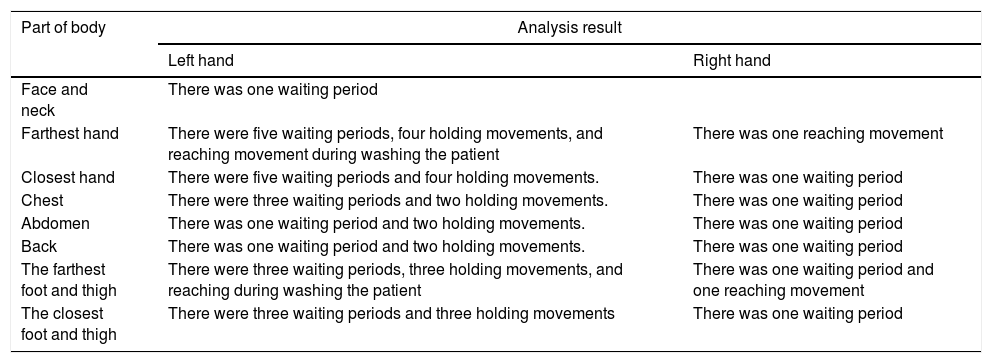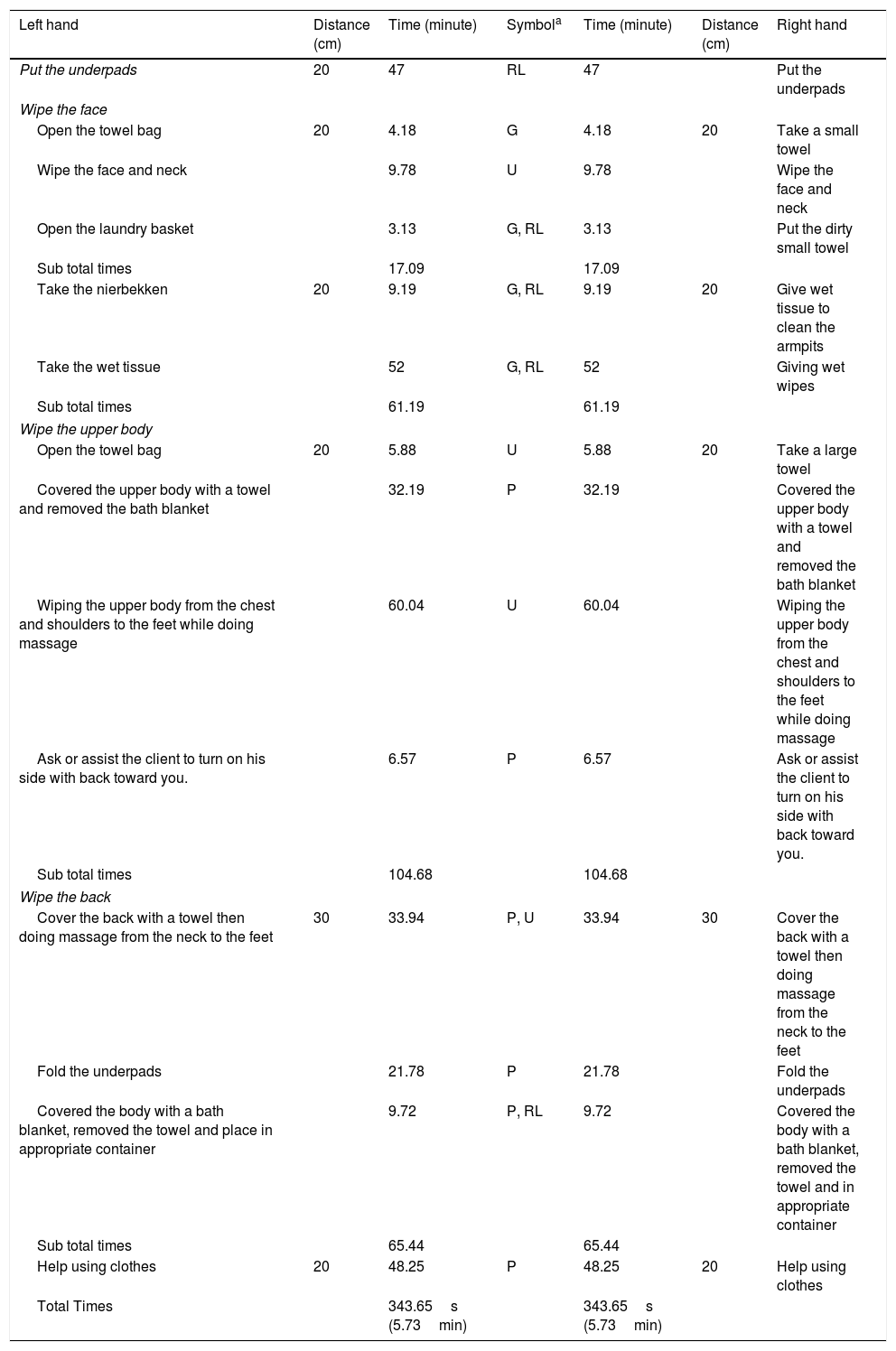Bed bathing procedures taught to nursing students are not appropriately or fully implemented in hospitals by both nurses and nursing students. This signifies the need to review the bed bathing procedures used in schools, by either simplifying or conditioning them according to the practice area. This study is an analytical-descriptive research which aims to analyze ineffective movements in the conventional bed bathing procedure using the left-hand and right-hand map and further improvements of the procedure in order to improve work efficiency. The subjects of this study were six nursing students from the Nursing Study Program of Udayana University. This research was conducted by analyzing video-recorded data containing the procedures performed by the subjects using the left-hand and right-hand map. The mapping was carried out on the six students who had been trained to use the bed bathing procedure. The bed bathing procedure was divided into eight movement elements. This study found that the average time for bathing a patient was 12.17min, excluding the time used for preparation, communication during bathing, tidying up the patient, and evaluation. The effective working time of the left hand was noted to be 6.25min while that of the right hand was 11.40min. The total waiting time on the left hand was 2.87min while that of the right hand was 0.74min. There were 3.26min of left-hand holding of body parts such as the patient's hands and feet, which movement was not found on the right hand. Modification was conducted by eliminating ineffective movements based on the economic principles of movement and the left-hand and right-hand map. It was concluded that after modification the average time for bathing a patient was 5.73min and work efficiency increased by 52.92%. Both hands worked simultaneously and there was no waiting movement.
Artículo
Comprando el artículo el PDF del mismo podrá ser descargado
Precio 19,34 €
Comprar ahora










